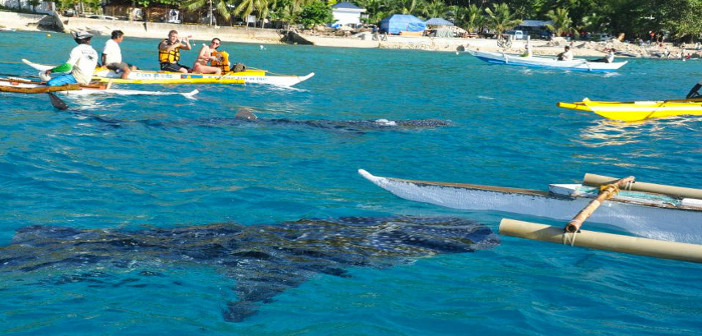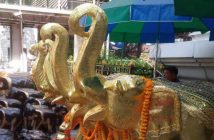Whenever we travel with our kids, a crucial question for them has become what wildlife we will see. Their eyes roll when I suggest visiting a temple or museum, but they both love animals, and it’s those memories which are often the most vivid for them: wild horses in Mongolia, macaws and macaques in Malaysia, and most recently swimming with turtles on the Philippine island of Cebu (although being attacked by a feral dog in Vientiane is a less pleasant recollection).
One of Cebu’s major attractions is the whale sharks at Oslob, so naturally we planned to make that part of our experience. However, when we visited a tour organizer, he was oddly unenthusiastic about taking our money.
“Look,” he said, “I’d have to charge you 5,000 pesos each [nearly USD 100]. You can get there much more cheaply just by booking a driver. But you’ll have to set off in the middle of the night to get there for dawn.”
My experience of the Philippines up to that point was that everyone was very keen to make money from tourists, so I found his attitude intriguing. We went back to our accommodation and did some research.
The whale sharks, the world’s largest fish, have for centuries passed by Oslob, at the southern tip of Cebu island, as part of their annual migration. Although they are true sharks (not whales), they present no risk to humans, but feed on plankton and small fish. Their presence only became a problem with Cebu’s growing population and the increasing industrialization of fishing, when they started eating the shrimp the fishermen used as bait.
The locals got in the habit of feeding them shrimp to lure them away from their fishing grounds. However an enterprising local hotelier saw an opportunity, and arranged for his guests to swim with the sharks. And so an industry was born.
Now tourists head out for Oslob by the busload. They are ferried out in strictly controlled numbers, take their turn with sharks, and come back again. The tourists are happy, the locals are prospering, the fish are fed. What, you may ask, is the problem?
The problem is that the whale sharks now stay at Oslob all year round, instead of following their natural migratory patterns. They are now wholly dependent on the industry for their survival. As my colleague Andy Penafuerte wrote, the practice is defended on the grounds that some of the money raised goes back to protecting the marine environment. However most conservationists view that as a fig leaf for a situation which is bad for the whale sharks and bad for the ecosystem.
However, I have to be honest with myself, and admit that our reasons for not going to Oslob were emotional rather than rational. As frequent flyers, we can hardly climb on any environmental high horses. But one blog I read about Oslob described it as a “circus”, and that was enough to put me off.
I’ve written before about the ethical questions involved in traveling in Asia with animal-mad children. For every responsibly-run rescue center, there’s a depressing aquarium or zoo where the animals are inadequately cared for or made to perform. I can’t pretend that there’s any consistency or rational coherence to the choices we make as a family, but on this occasion, we decided to stay away.
Photo: I Travel Philippines




